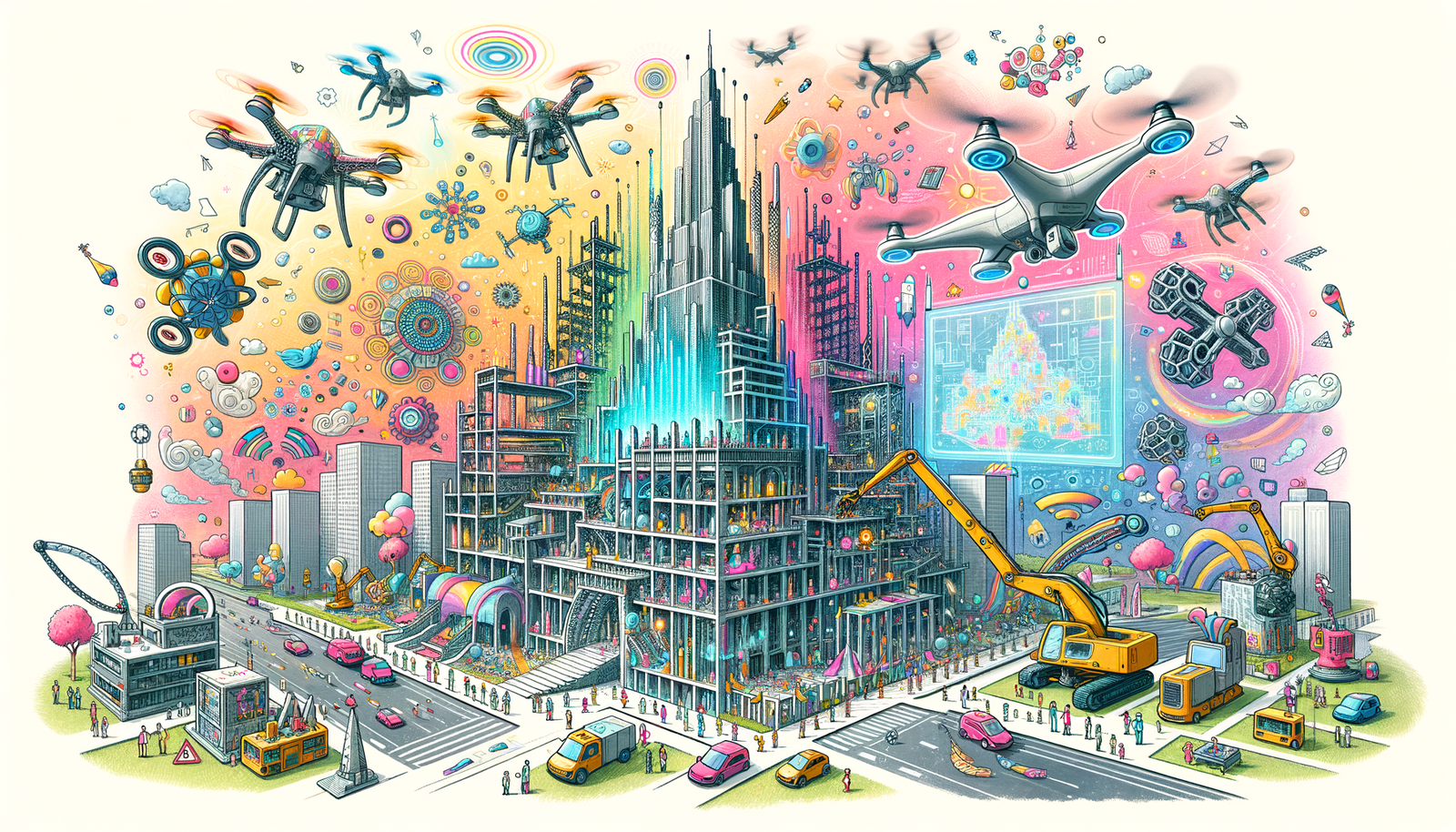Your Cart is Empty
Customer Testimonials
-
"Great customer service. The folks at Novedge were super helpful in navigating a somewhat complicated order including software upgrades and serial numbers in various stages of inactivity. They were friendly and helpful throughout the process.."
Ruben Ruckmark
"Quick & very helpful. We have been using Novedge for years and are very happy with their quick service when we need to make a purchase and excellent support resolving any issues."
Will Woodson
"Scott is the best. He reminds me about subscriptions dates, guides me in the correct direction for updates. He always responds promptly to me. He is literally the reason I continue to work with Novedge and will do so in the future."
Edward Mchugh
"Calvin Lok is “the man”. After my purchase of Sketchup 2021, he called me and provided step-by-step instructions to ease me through difficulties I was having with the setup of my new software."
Mike Borzage
Revolutionizing Architecture: The Impact of Digital Fabrication Techniques
November 17, 2024 6 min read


Introduction to Digital Fabrication in Architecture
Digital fabrication has emerged as a transformative force in the field of architecture, revolutionizing the way buildings are conceived and constructed. At its core, digital fabrication refers to the use of computer-controlled processes to manufacture physical objects directly from digital models. This encompasses a range of techniques such as 3D printing, CNC machining, and laser cutting. The evolution of architecture in relation to digital tools has been significant, moving from traditional hand-drawn blueprints to sophisticated computer-aided design (CAD) systems. This shift has allowed architects to explore more complex geometries and innovative designs that were previously unattainable. The importance of digital fabrication in modern architectural practices cannot be overstated. It enables precise control over the construction process, reduces material waste, and fosters greater creativity by allowing architects to push the boundaries of design. By integrating digital fabrication techniques, architects are able to bring their visions to life with greater efficiency and accuracy, leading to a new era of architectural innovation.3D Printing
Three-dimensional printing, commonly known as 3D printing, is one of the most impactful digital fabrication techniques in contemporary architecture. This additive manufacturing process creates objects by depositing material layer by layer, following a digital 3D model. In architecture, 3D printing allows for the rapid prototyping of complex structures, enabling architects to test and refine their designs quickly. **Overview of additive manufacturing in architecture** highlights that 3D printing is not limited to small-scale models; it is increasingly used to construct building components and even entire structures. The ability to produce intricate designs with minimal material waste makes 3D printing an attractive option for sustainable construction practices. **3D printing enables the creation of customized building elements**, offering unparalleled flexibility in design. Architects can experiment with organic shapes and complex geometries that would be difficult or impossible to achieve with traditional construction methods. The use of materials such as concrete, polymers, and composites in 3D printing expands the possibilities for architectural applications. As technology advances, the integration of 3D printing into architectural projects is expected to grow, further enhancing the capabilities of architects to bring innovative designs to fruition.CNC Machining
Computer Numerical Control (CNC) machining is a subtractive digital fabrication method that plays a crucial role in modern architecture. This technique involves the use of computer-controlled machines to remove material from a solid block, shaping it into the desired form. **Explanation of subtractive methods in architecture** reveals that CNC machining is essential for producing precise and complex components with high accuracy. The benefits of CNC technology in building components are substantial. It allows for the mass production of standardized parts as well as the creation of bespoke elements tailored to a specific design. **CNC machining offers high precision and repeatability**, which is essential for ensuring the quality and integrity of architectural components. However, there are limitations to consider. CNC machining can be material-intensive, leading to increased waste compared to additive processes like 3D printing. Additionally, the complexity of programming and operating CNC machines requires specialized knowledge and skills. Despite these challenges, the versatility and precision of CNC machining make it an indispensable tool in the architectural fabrication process, enabling architects to realize detailed and intricate designs with confidence.Laser Cutting
Laser cutting is a digital fabrication technique that utilizes a focused laser beam to cut or engrave materials with exceptional precision. **Use of laser technology in fabricating intricate designs** is particularly advantageous in architecture, where detailed models and components are often required. Laser cutting is ideal for working with materials such as wood, acrylic, metal, and fabric, making it a versatile tool for architects. The technology allows for the creation of complex patterns and shapes that would be challenging to achieve manually. **Laser cutting enables architects to produce accurate and detailed scale models**, which are essential for visualizing and communicating design concepts. Additionally, laser cutting is used to fabricate components like façade panels, screens, and interior elements with intricate designs. One of the key advantages of laser cutting is its speed and efficiency, allowing for rapid production without sacrificing quality. While laser cutting offers numerous benefits, it also has limitations, such as the potential for material discoloration or scorching, and restrictions on the thickness of materials that can be effectively cut. Nevertheless, laser cutting remains a valuable technique in the architectural fabrication toolkit, enhancing the ability of architects to translate complex digital designs into physical reality.Design-to-Fabrication Process
The seamless integration of design and fabrication is essential for leveraging the full potential of digital fabrication in architecture. **Understanding the workflow from concept to physical model** involves a comprehensive approach that encompasses digital modeling, material selection, and fabrication techniques. Architects must ensure that their digital models are compatible with fabrication equipment and consider the limitations and possibilities of the chosen fabrication method. **Challenges in integrating these processes** include issues such as file compatibility, material properties, and machine parameters. To navigate these challenges, architects can employ several strategies:- **Utilizing integrated software platforms** that facilitate smooth transitions between design and fabrication stages.
- **Collaborating closely with fabrication specialists** to align design intentions with fabrication capabilities.
- **Incorporating fabrication constraints into the design process** to minimize errors and adjustments during production.
Collaboration Across Disciplines
Digital fabrication in architecture necessitates a high level of collaboration between various disciplines. **Importance of interdisciplinary teamwork** is paramount, as architects, engineers, fabricators, and other specialists must work cohesively to achieve project goals. Effective collaboration ensures that design concepts are feasible, practical, and optimized for fabrication. **Tools and software that facilitate collaboration and communication** play a critical role in this process. Platforms that allow real-time sharing of models, annotations, and feedback help bridge the gap between different team members. For instance, Building Information Modeling (BIM) software enables all stakeholders to access and contribute to a unified model, fostering transparency and reducing misunderstandings. Communication tools that support virtual meetings and remote collaboration are also essential, particularly in an increasingly globalized industry. By leveraging these tools, architects can enhance coordination, streamline workflows, and ensure that all team members are aligned with the project's objectives. Ultimately, fostering strong interdisciplinary collaboration leads to more innovative solutions and successful outcomes in architectural projects that utilize digital fabrication techniques.Sustainability Considerations
Incorporating digital fabrication techniques into architecture offers significant opportunities to enhance sustainability. **Evaluating the environmental impact of digital fabrication techniques** is crucial, as the construction industry seeks to reduce its carbon footprint and promote eco-friendly practices. Digital fabrication can contribute to sustainability by optimizing material usage, reducing waste, and enabling the use of sustainable materials. **Innovations in material use and waste reduction strategies** are key components of this effort. For example:- **Implementing additive manufacturing processes**, such as 3D printing, to minimize material waste by building components layer by layer.
- **Utilizing eco-friendly materials**, including recycled or bio-based substances, in fabrication processes.
- **Optimizing designs for material efficiency**, reducing the amount of material required without compromising structural integrity.
Future Trends and Challenges
The future of digital fabrication in architecture is shaped by emerging technologies that promise to further transform the industry. **Emerging technologies such as AI, robotics, and bio-materials** are at the forefront of this evolution. Artificial Intelligence (AI) can augment the design process by analyzing data, optimizing structures, and suggesting innovative solutions. **Robotics in fabrication** offers the potential for increased precision and efficiency, with robots capable of performing complex tasks such as bricklaying, welding, and assembly. Bio-materials, developed through bio-engineering, introduce new sustainable options for construction, such as mycelium-based composites and algae-infused concrete. However, the integration of these technologies presents challenges. **Potential challenges in widespread adoption** include high costs, technological complexity, and the need for specialized skills. Additionally, there may be resistance to change within the industry and concerns about the reliability and safety of new technologies. **The role of education and training** is critical in overcoming these obstacles. Preparing architects for the future of digital fabrication involves updating academic curricula to include these emerging technologies, as well as providing ongoing professional development opportunities. By investing in education and embracing innovation, the architectural profession can navigate these challenges and capitalize on the benefits that new technologies offer.Conclusion
Digital fabrication techniques are reshaping the landscape of modern architecture, offering new possibilities for design innovation, efficiency, and sustainability. The adoption of methods such as **3D printing, CNC machining, and laser cutting** enables architects to push the boundaries of creativity and realize intricate designs with greater precision. The integration of these technologies into architectural workflows enhances collaboration across disciplines and supports the development of more sustainable building practices. As the industry continues to evolve, it is imperative for architects and designers to embrace these technologies, staying abreast of future trends and preparing to meet the challenges ahead. **Education and training play a vital role** in equipping professionals with the skills necessary to leverage digital fabrication fully. By fostering a forward-thinking mindset and commitment to innovation, architects can drive the industry toward a more dynamic and sustainable future. The impact of digital fabrication on architectural practices and sustainability is profound, and its continued advancement holds the promise of even greater contributions to the built environment.Also in Design News
Subscribe
Sign up to get the latest on sales, new releases and more …





